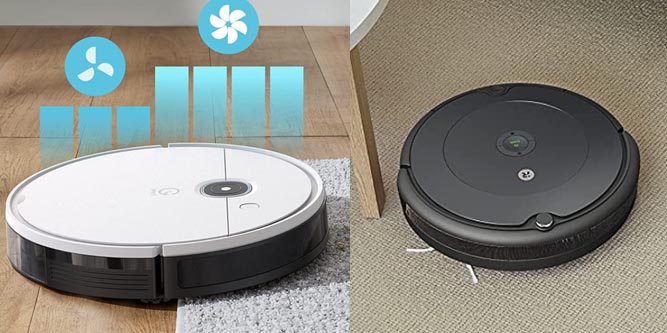In the world of high technology, we often think of the most exciting, flashy releases. Everyone loves to talk about PlayStation vs. Xbox, or Apple vs. Samsung. This only makes sense, since that’s where we notice technology the most. When we’re playing games, or watching movies, or enjoying social media, we’re keenly aware of our devices. But there are plenty of other types of technology that are underappreciated. A good example of this is the simple vacuum cleaner.
When vacuum cleaners were first invented, they were a marvel of technology. Instead of spending hours beating the dust out of a rug, you could vacuum it in mere minutes. But if you’ve got a lot of carpeting in your home, vacuuming can be a time-consuming task. With a robot vacuum, you no longer need to sacrifice your time. Your floor gets cleaned automatically, while you get to go about your life. If saving time isn’t the ultimate technological benefit, we don’t know what is.
With that in mind, we’re about to compare two of today’s top robot vacuums. First up, we’ll be examining the Yeedi Vac. This is a powerful vacuum with almost two hours of battery life. Next, we’ll look at the Roomba 694. This vacuum comes from a renowned brand, and uses an app that’s been refined for 20 years. But how do the two vacuums stack up in practice? How easy are they to use, and how well do they clean your floor? To find out, we’ll need to look a little more closely at each one. We’ll examine their physical construction, their cleaning performance, and their ease of use. After we’ve given them both a thorough once-over, we’ll be prepared to render our judgement. Let’s get started!
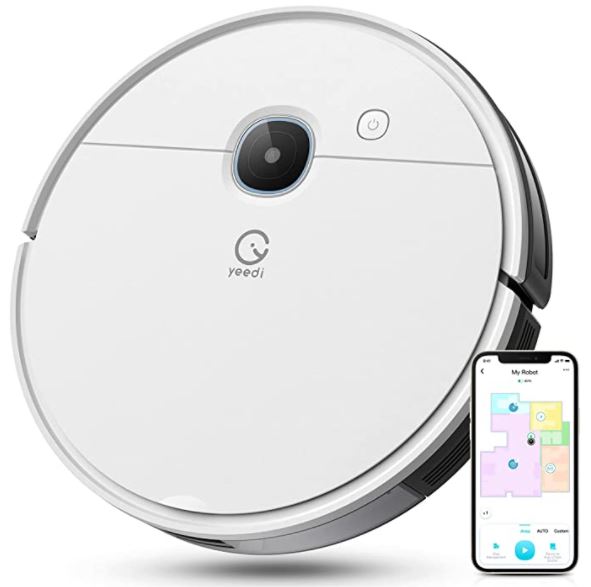
Yeedi Vac
The Yeedi Vac, like most robot vacuums, has a disc-shaped profile, and is about the size of a dinner plate. The housing is constructed from white ABS plastic, with protective bumpers around the perimeter. The top is also protected, with a tempered glass upper surface that’s easy to keep clean. Located towards the front of the top, there’s a small black panel, which is home to the vacuum’s sensors. In the same general area, you’ll find a power button, which is used to start a cleaning cycle. All the other controls can be found in the app.
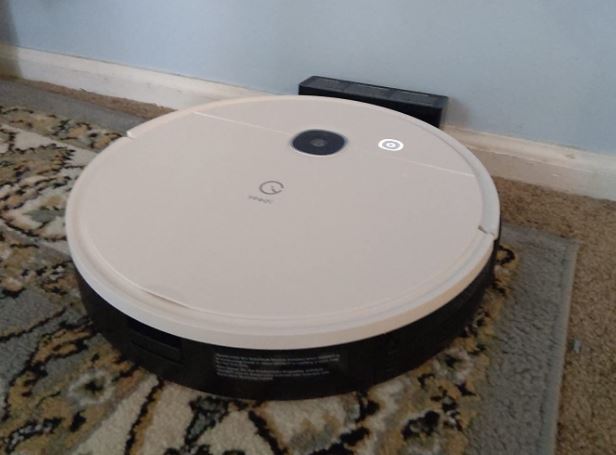
Flip the vacuum over to reveal a well-engineered roller brush. This brush uses a combination of nylon bristles and rubber fins, which work on many surfaces. The bristles will dig into carpets, pulling out dust and debris from the lower layers. The flaps, meanwhile, do a better job on solid floors. Another feature for solid floors is the horizontal brush, which protrudes from the front right. This brush sweeps debris towards the center, so the main brush can more easily collect it.
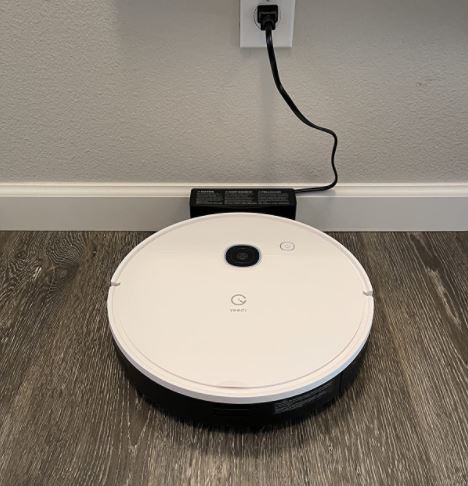
On either side of the main brush, there are big, rubbery wheels. They’re large enough to cross the majority of floor transitions. Whether you’re going from carpet to tile, tile to hardwood, or something else, you won’t have any trouble. A smaller wheel is mounted in the front of the vacuum, in its own swiveling housing. The wheel itself doesn’t provide any drive power, but it rotates to steer the vacuum.
In the front half of the vacuum housing, there’s a small dust hopper. This hopper has a capacity of only 450ml, smaller than the average robot vacuum’s half-liter dust bin. As a result, you’ll have to empty it more frequently than you do with a lot of robot vacuums. On the plus side, the hopper is easy to remove and reinsert, and emptying it is relatively painless.
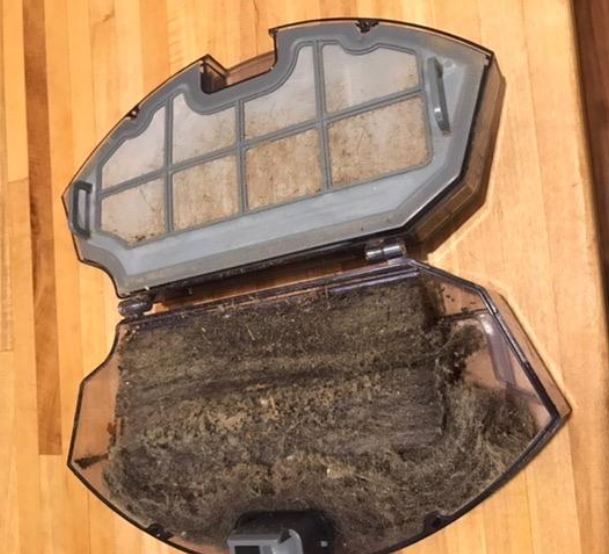
Not only that, but Yeedi actually sells the Yeedi Vac in a self-emptying version. The Yeedi Vac Station includes a Yeedi Vac, along with a large charging station that empties the small hopper. It also sports a mopping attachment, which doesn’t come on the basic Yeedi Vac. On the other hand, the ordinary Yeedi Vac’s smaller base station makes it easier to position.
Cleaning Performance
The Yeedi Vac provides 2,500 Pascals (Pa) of suction power. This compares favorably to the 2,000Pa of suction you get from the average robot vacuum. 2,500Pa is sufficient for any everyday cleaning, which is what a robot vac is for. You can collect dust and dirt from any surface, with the exception of deep pile carpets. It can collect spilled rice, beans, and even cat food without any trouble. That said, remember that robot vacuums are not designed for deep cleaning. By comparison, the average upright vacuum provides 14,000Pa of suction, and shop vacs offer much more.
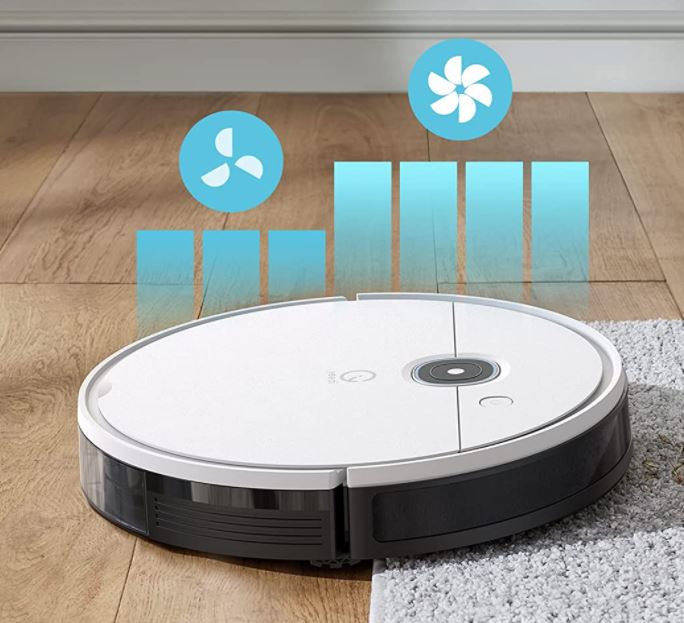
The rechargeable battery is rated to last for 110 minutes on a full charge, or just under two hours. In practice, this will vary depending on the type of surface you’re cleaning. But for most homes, you’ll be able to clean around 1,100 square feet of floor space on a single charge. If that’s not enough coverage, don’t worry. The vacuum will automatically return to base when the battery gets low. When it’s done recharging, it will pick up cleaning right where it left off. That said, it’s a good idea to take advantage of this opportunity to empty the dust hopper.
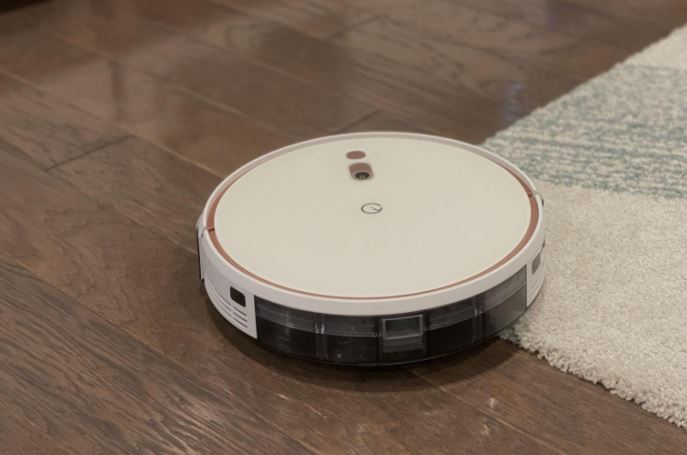
Everyday Use
The Yeedi Vac utilizes its built-in sensors to create a map of your home. When it first runs, it will seem to be roaming around erratically, but give it some time. It’s looking for obstacles and storing the map in memory. Once that’s done, it will be able to clean your floor. During a normal cycle, it will run in an S-pattern, much like you’d run your manual vacuum.
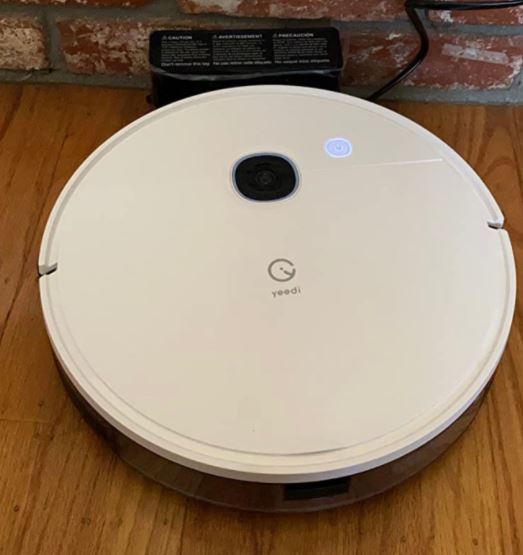
If you want to do anything other than run a single cleaning cycle, you’ll need to use the Yeedi app. The app allows you to view your vacuum’s internal map. From there, you can schedule cleanings on a daily or weekly basis, for whenever you’re not at home. Within the app, you can also clean individual rooms, or block off designated areas as no-go zones. And if you prefer voice controls, you can also pair the vacuum with Google Assistant or Alexa. That way, you can use voice commands to do anything you can do through the app.
The Yeedi Vac is Yeedi’s current flagship vacuum, and it has a price tag to match. If you want a more affordable option, consider the Yeedi K650 instead. It’s nearly as powerful, but it has fewer features. You can’t access any map through the app, so basic cleaning is all it’s really capable of.
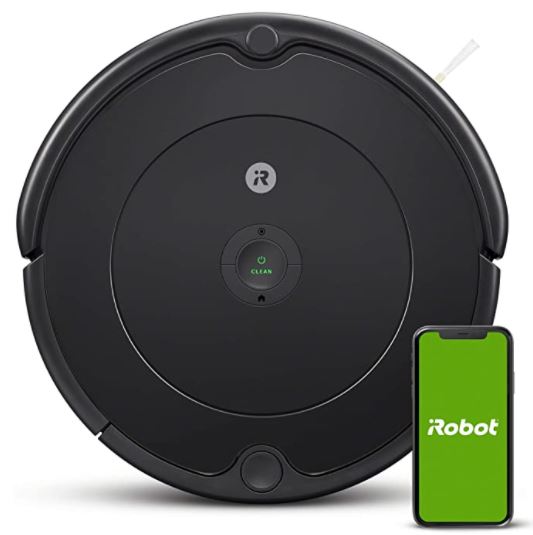
Roomba 694
The Roomba 694 has a similar profile to the Yeedi Vac, measuring 13.4 inches in diameter and 3.54 inches thick. However, it’s black instead of white, and there’s no tempered glass on the top. Instead, the top is slightly recessed for protection, with thicker bumpers than on the Yeedi Vac. The controls are located in the center, with a round power button that starts a cycle. Beneath that, there’s a home button, which returns the vacuum to the charging station. There’s also a Roomba logo on the top, emblazoned in silver-grey.
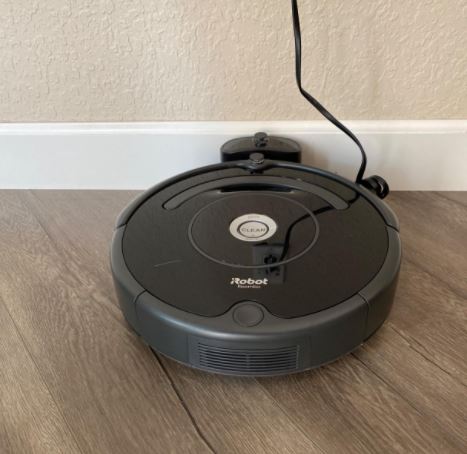
On the bottom of the vacuum, there’s a main roller. It’s manufactured with nylon bristles, which are meant primarily for carpets. However, they do a reasonably good job of cleaning floors as well, particularly combined with the suction. To the front right, there’s a horizontal, sweeping brush, another similarity to the Yeedi Vac. It serves much the same function, sweeping dust and dirt to the center on a solid floor.
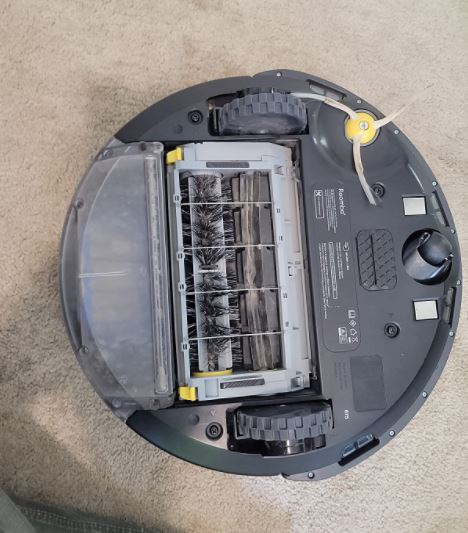
The wheels on the bottom also have a similar layout, with big, knobby ones to the sides. There’s also a front steering wheel, which provides navigation. Traversing ordinary floor transitions is no big deal, so you can access anywhere in your home. All in all, we didn’t have any complaints about the design. The charging station is even well-engineered, so it sits close to the wall.
Cleaning Performance
The Roomba 694 utilizes infrared sensors to detect how much dirt it’s sucking up. In more heavily soiled areas, it will slow down to improve the cleaning performance. In cleaner areas, it will speed up for better efficiency. The brush even adjusts its height automatically for carpets. Unfortunately, the maximum suction power is a mere 1,670Pa. That’s less than the average robot vacuum, and it’s disappointing to see in a brand name offering.
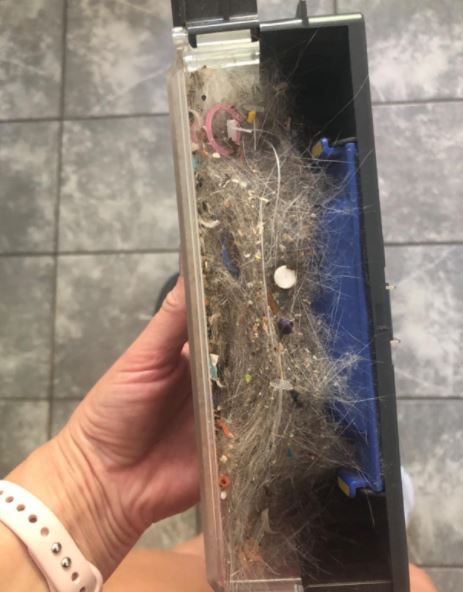
If maximum suction is what you crave, the Dreame Bot Z10 Pro is a better choice. It provides a whopping 4,000Pa of suction, as well as the self-emptying function of the Yeedi Vac Station. On the downside, it’s significantly pricier than the Roomba.
The 694 has around 90 minutes of battery life on a single charge. That’s less than the Yeedi Vac, but not by much. In practice, you’ll be able to clean around 900 square feet per charge. And just like the Yeedi, the Roomba will return to base when it runs out of juice.
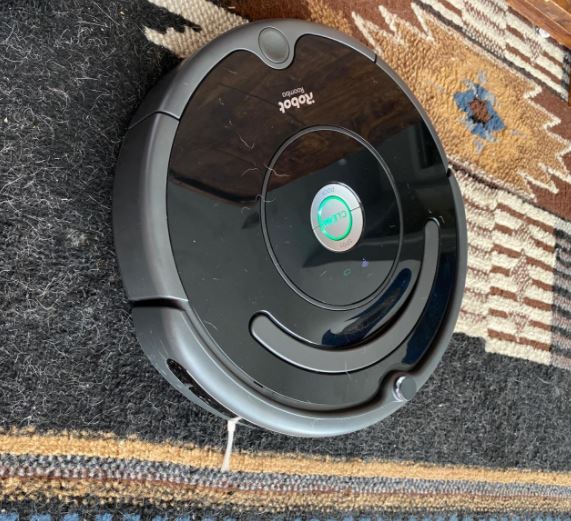
Everyday Use
When it comes to everyday operation, the Roomba 694 and the Yeedi Vac are very similar. The iRobot HOME app is well-designed and highly-polished, and you can perform many types of cleaning. You can schedule regular cleanings, or run them on an impromptu basis. You can also block off rooms or spot clean specific ones. You can even use your home’s voice assistant, just like the Yeedi Vac. Just keep in mind that like any mapping vacuum, the 694 needs time to learn its environment. The first time it runs, it’s going to look a bit awkward.
Final Verdict
The Yeedi Vac and the Roomba 694 have a lot in common. They’re a similar size, with a similar design, at a similar price point. Both come with powerful mapping technology, and both of them have well-designed apps. That said, the Yeedi Vac is the more powerful of the two, with more than a third more suction power. Not only that, but it has a longer-lasting battery, so you can clean a larger area without recharging. For those reasons, it stands out as the better option of the two.
Meet Ry, “TechGuru,” a 36-year-old technology enthusiast with a deep passion for tech innovations. With extensive experience, he specializes in gaming hardware and software, and has expertise in gadgets, custom PCs, and audio.
Besides writing about tech and reviewing new products, he enjoys traveling, hiking, and photography. Committed to keeping up with the latest industry trends, he aims to guide readers in making informed tech decisions.

